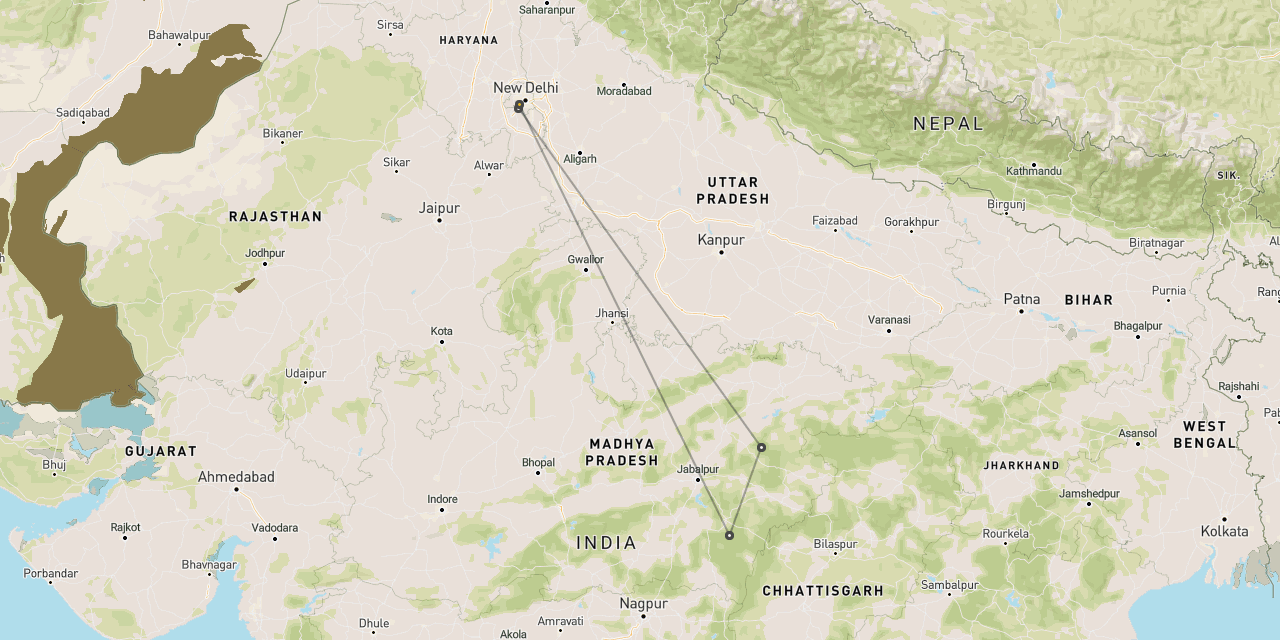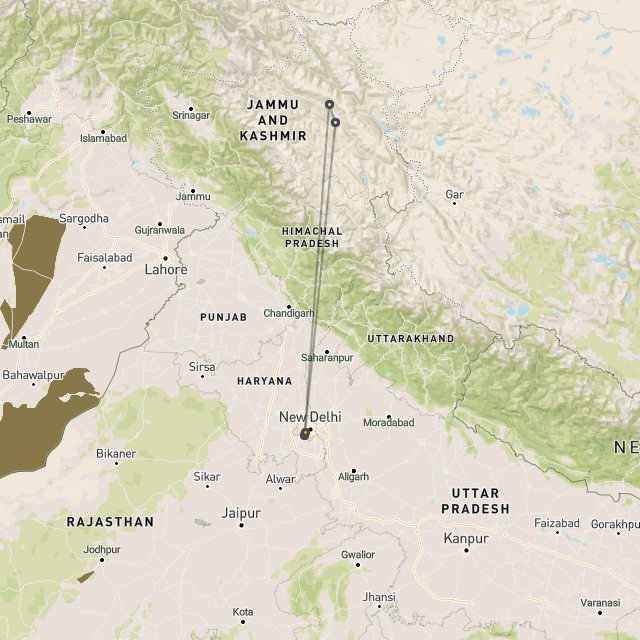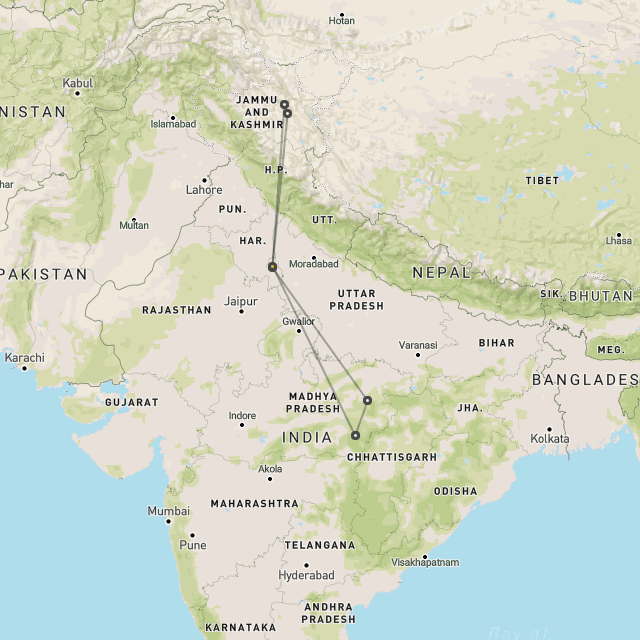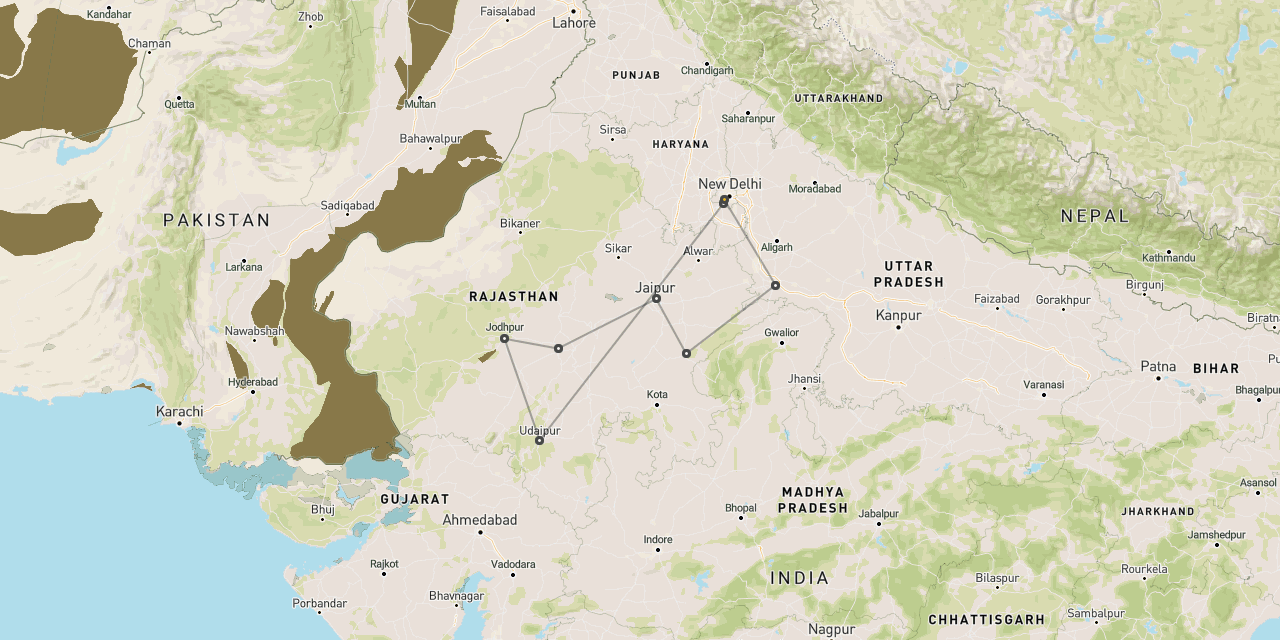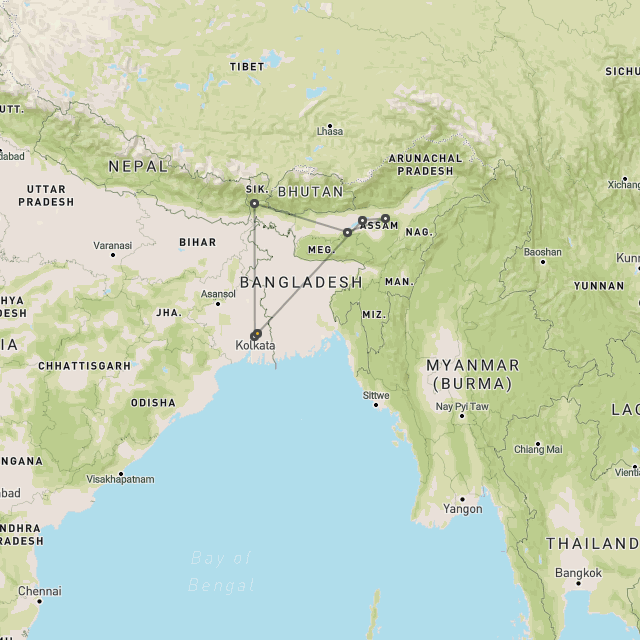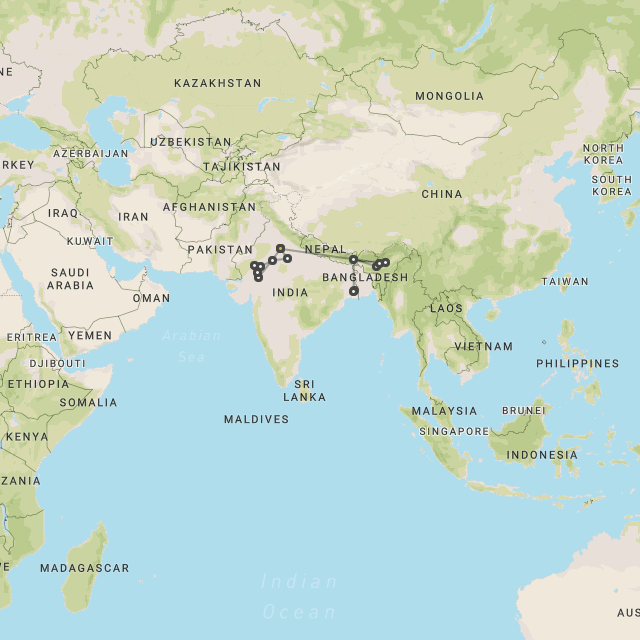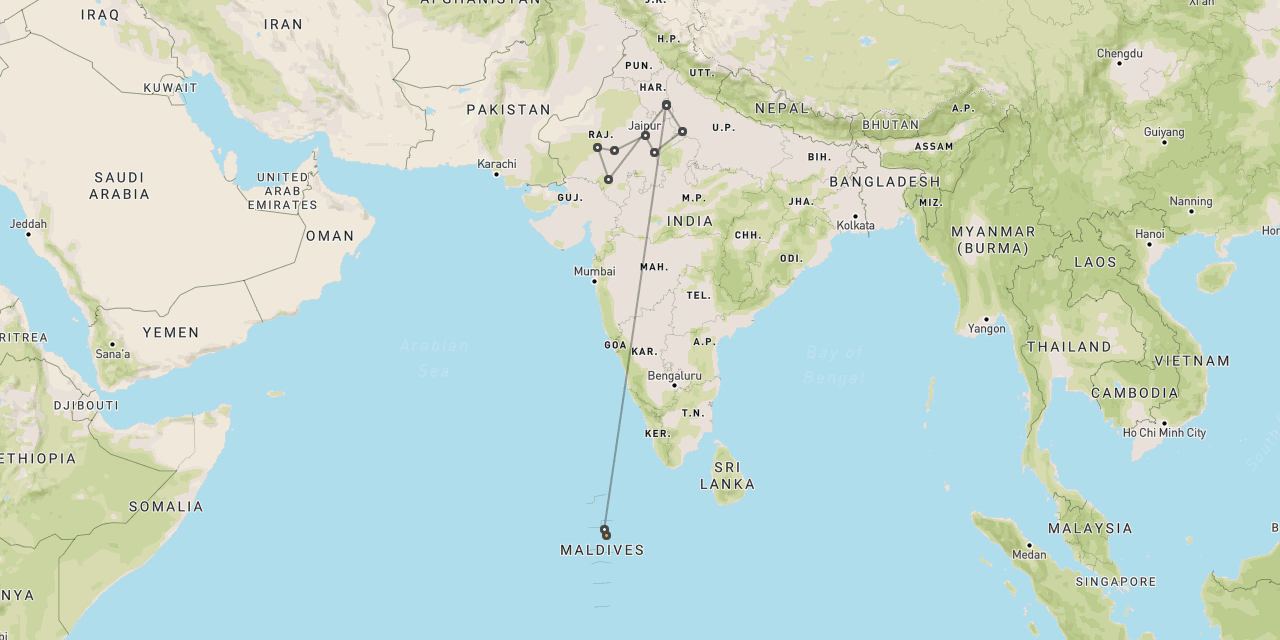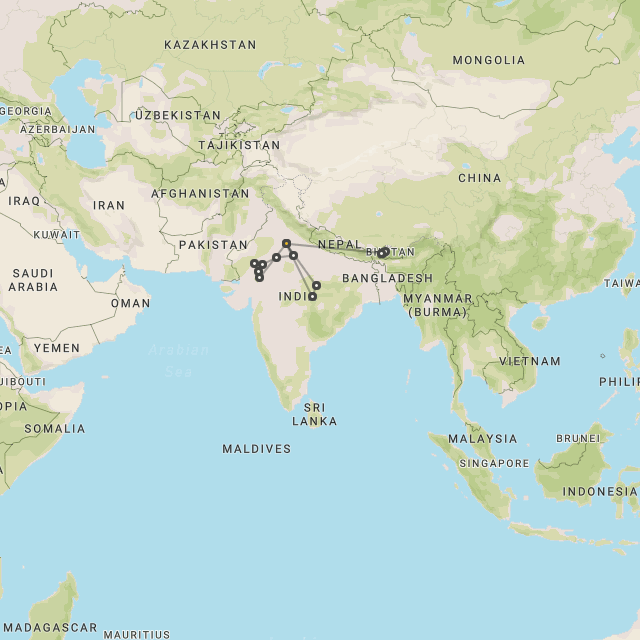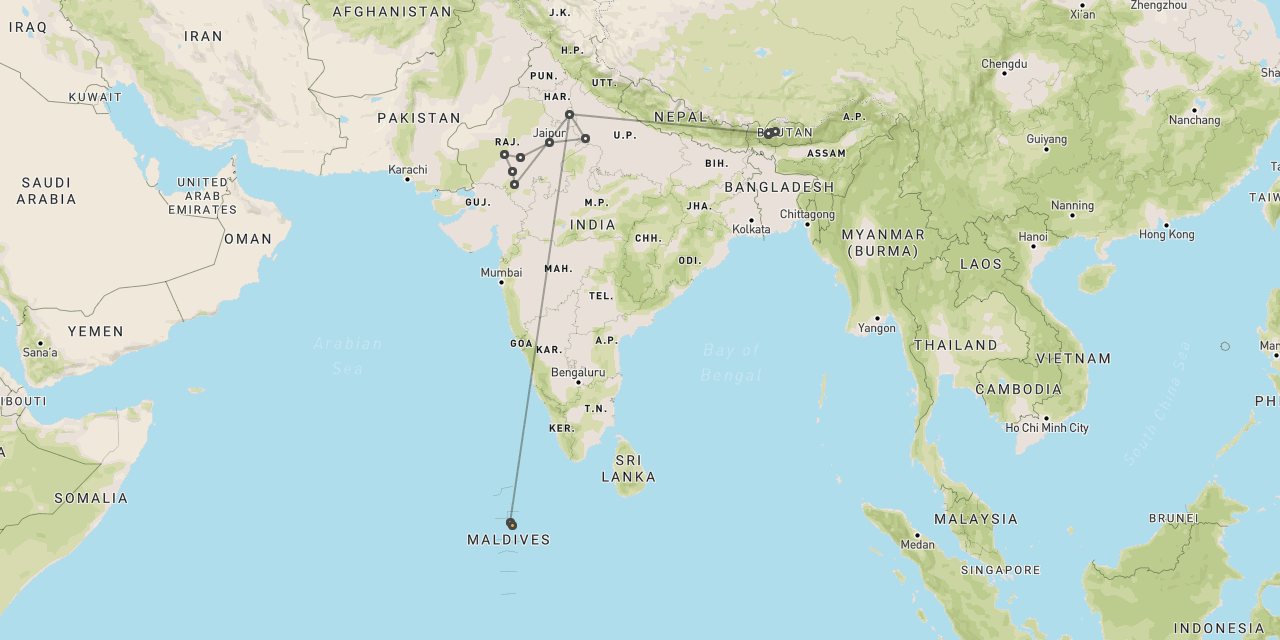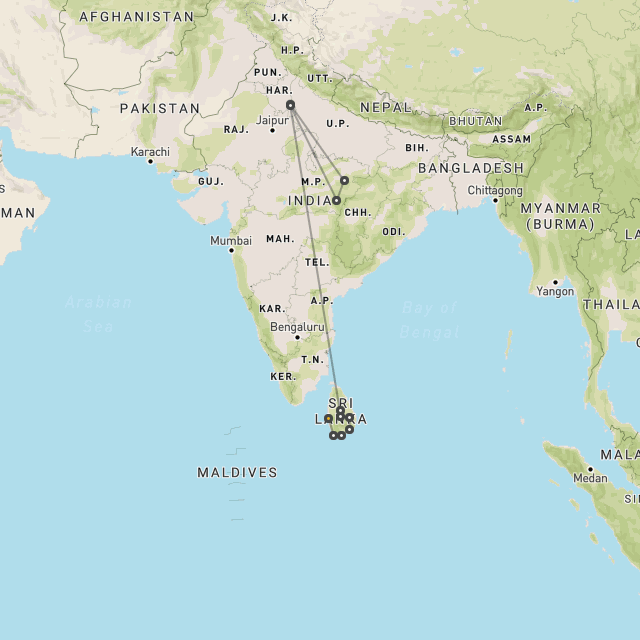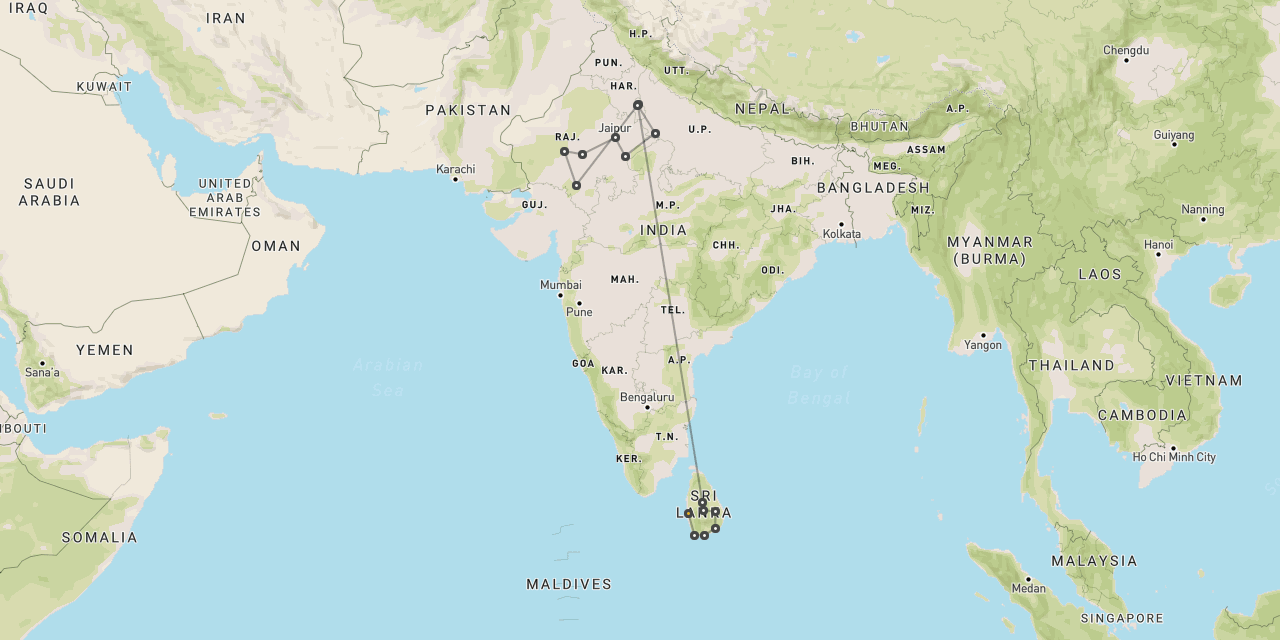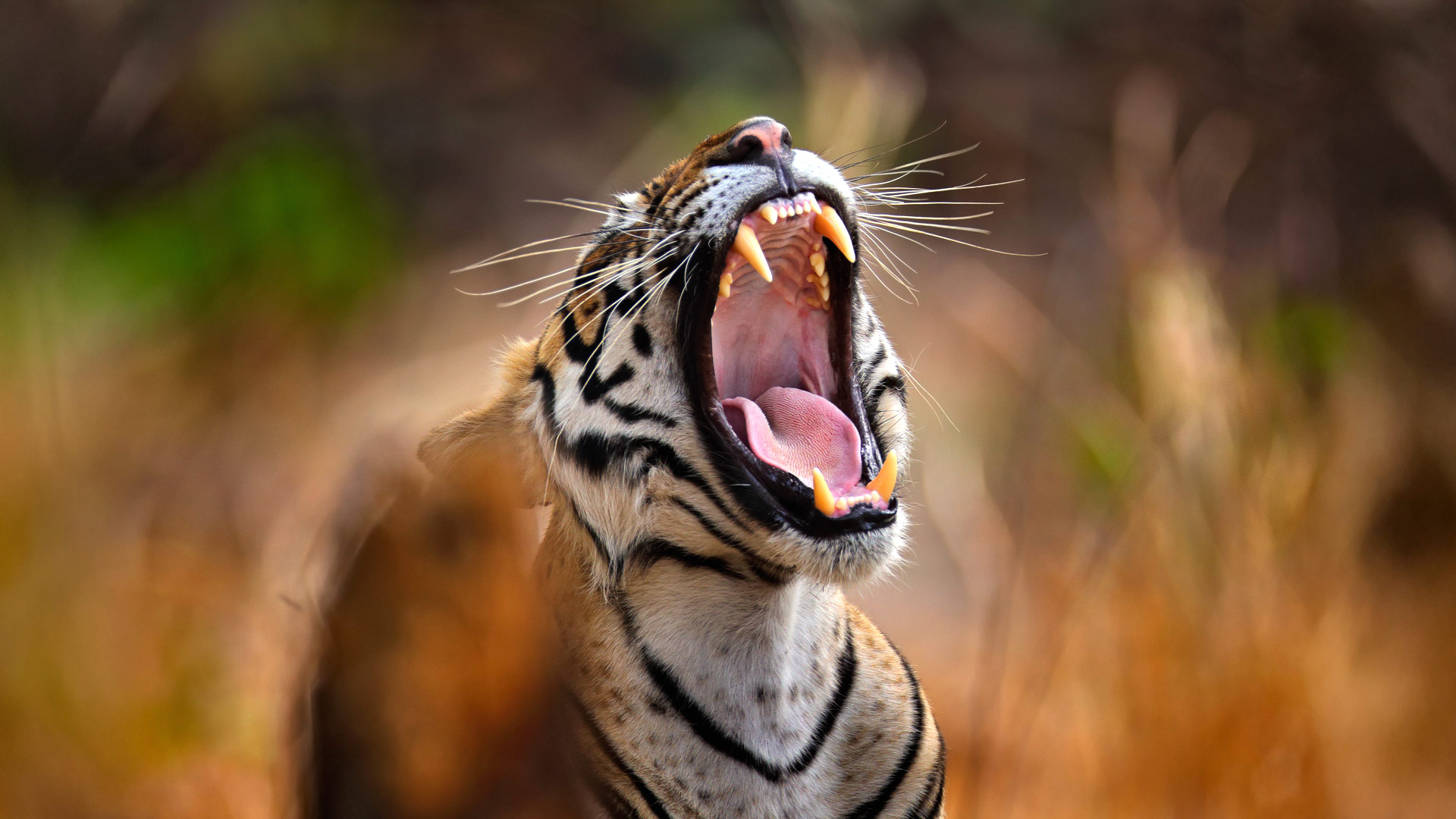
Safari to Ranthambore
Ranthambore
is the best tiger reserve
in Rajasthan
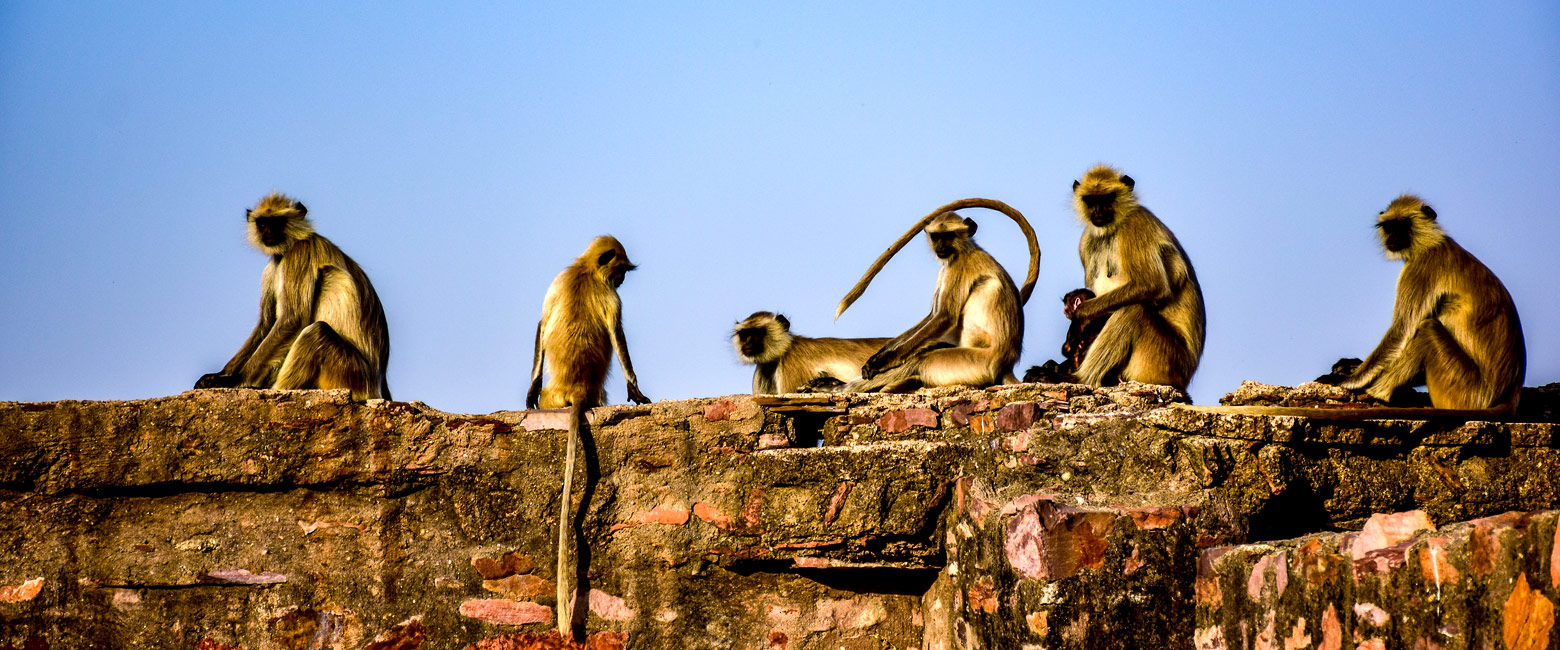
an iconic reserve with romantic ruins
Ranthambore National Park is located in the Rajasthan province of northern India, around 350 km south of Delhi.
If you are interested in combining the great fort cities of Rajasthan with a short 2-5 night stay in a tiger safari area, then the chances are that you will end up doing that here at Ranthambore. Only those people who want to dedicate at least a full week towards their safari tend to head down to the more remote tiger reserves of Madhya Pradesh.
Previously the private hunting reserve of the Maharajas of Jaipur, the park is named after the romantic ruins of Fort Ranthambore, which lie within the reserve and date back to around 950 AD.
Originally established as the Sawai Madhopur Game Sanctuary in 1955, the extended Ranthambore National Park now covers 1334 sq km (515 sq mi). It is tucked between the Aravali and Vindhya hills, bound by the Banas River to the north and the Chambal River to the south.
The reserve is comprised of an elevated, boulder-strewn plateau, into which are cut scenic steep-sided valleys, with areas of deciduous forests, open grasslands, rivers, lakes and small patches of verdant marshes, with over 530 species of flowering plants.
The largest body of water in the reserve is the scenic Padam Talao, set against a backdrop of sandstone escarpments, with the Jogi Mahal ruined hunting lodge and India’s second largest banyan tree along its shores.
The presence of various ruins greatly adds to the sense of romance of the reserve. The largest is Fort Ranthambore itself, once one of the largest military complexes in India. These impressive ruins include various ancient temples, mosques, hunting pavilions, crocodile-filled lakes and highly atmospheric, liana-covered chhatris (traditional tombs). People travel from across India to seek the blessings of Ganesha, the elephant god, at the sacred ruined temple here.
Ranthambore is best known for its tiger population. This is reckoned to be one of the most reliable places to find and observe these usually very elusive creatures.
Around 2005 the population of tigers within the reserve was found to have dropped to just 22 animals. Major efforts funded by the national government urged local villagers to keep out of the reserve and clamped down hard on poachers. As a result the tiger population in Ranthambore recovered to 62 tigers by 2014.
This number of tigers is reckoned to be close to the carrying capacity of the reserve. In recent years animals have been captured and relocated to other areas where the numbers are too low, notably Sariska Tiger Reserve, further to the north in Rajasthan.
Although the national park is best known for tigers, it also contains a wide range of wildlife, with predators including Indian leopards, jungle cats, desert cats, striped hyenas, jackals, dholes (Asian wild dogs) and sloth bears.
Prey species include wild boars, sambar deers, spotted deers, chinkaras (Indian gazelles) and nilgais (blue bulls). Primates include southern plains gray langurs and rhesus macaques.
Other interesting species include mugger crocodiles and tortoises. A huge range of bird species famously includes exotics such as peacocks.
Ranthambore is the best known and most-visited tiger reserve in Rajasthan. Vehicle traffic inside the reserve during high season can be unpleasantly high, with serious clustering around major sightings. Traffic avoidance measures are strongly advised.
Also in the area is Sawai Mansingh Sanctuary, a small and peaceful reserve, which is particularly good for viewing gazelles, as well as Lake Soorwal, which hosts large flocks of migratory birds (including painted storks, flamingos and spoonbills) during Nov-Mar.
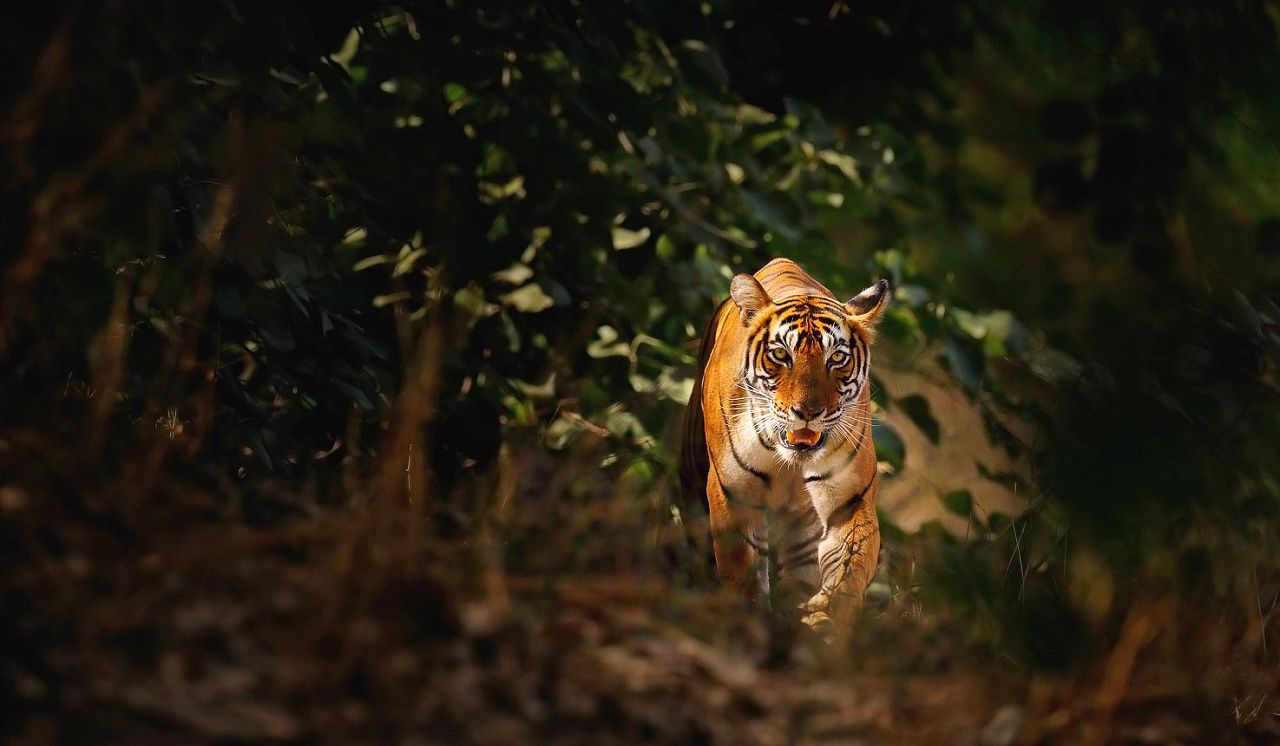
Gallery
Map
The best time of year to visit the Ranthambore area is generally considered to be during Oct-May, although there are considerable climatic and wildlife viewing variations over that period.
October is the transition period between the end of the monsoon rains and the start of the cool dry season. During October the daytime temperatures usually rise to around 34C/93F, whilst the nighttime low temperatures hold up around 20C/68F. However the rainfall is much lower, dropping to around 25mm (1”) per month. Sunshine is around 8 hours per day (around 75% of daylight hours), meaning that skies are usually clear.
Nov-Feb is the main cool dry season. During Nov-Feb the daytime temperatures usually rise to around 25C/77F, whilst the nighttime low temperatures plunge to around 9C/48F. There should be very little rainfall. Sunshine is around 8 hours per day (around 80% of daylight hours), meaning that skies are usually clear. As this season progresses and the foliage starts to die back, the visibility for viewing tigers and other animals should improve, meaning that February is perhaps the best month of the year.
Mar-May is the hot season, the often uncomfortable build-up to the main monsoon. During Mar-May the daytime temperatures can climb steeply to around 37C/99F, whilst the nighttime low temperatures are up around 23C/73F. Rainfall usually increases slightly, from almost nothing in March to around 25mm (1”) in May. Sunshine is around 8 hours per day (around 75% of daylight hours), indicating that showers tend to be occasional, set against a usually clear sky. The foliage should have largely died off by this time, making wildlife viewing easier. Also the tigers and other animals tend to cluster around the few remaining water sources. All of that adds up to strong wildlife viewing, especially during the middle of the day, if you can take the heat.
June is the transition month ahead of the main monsoon rains, often with rather uncomfortable conditions. During June the daytime temperatures can climb very steeply to around 40C/104F, whilst the nighttime low temperatures remain up at a stifling 28C/82F. Rainfall climbs to around 50mm (2”) over the course of the month. Sunshine is around 7 hours per day (around 45% of daylight hours), meaning that skies are often overcast as the monsoon clouds gather.
Jul-Sep is the main monsoon season and is generally considered to be the least favourable time to visit. During Jul-Sep the daytime temperatures drop off slightly to around 34C/93F, whilst the nighttime low temperatures remain up at a stifling 24C/75F. Rainfall climbs to around 175mm (7”) per month. Sunshine drops to around 5 hours per day (around 35% of daylight hours), meaning that skies are very often heavily overcast.
Getting there
The Ranthambore area can be accessed in a number of different ways…
By air
The closest airport and it’s most common connections are …
- Jaipur : 100km to the northwest : Delhi, Jaisalmer, Varanasi, Mumbai
By train
The closest train station and it’s most common connections is…
- Sawai Mahopur Junction : 6km to the southwest : Delhi, Jaipur, Jodhpur, Udaipur, Mumbai
By luxury train
The Ranthambore area is visited by the following luxury live-aboard train itineraries…
Train : Maharaja’s Express
- Treasures of India : 3 nights : Delhi to Delhi
- Indian Panorama : 6 nights : Delhi to Delhi
- Indian Splendour : 6 nights : Delhi to Mumbai
- Heritage of India : 6 nights : Mumbai to Delhi
Train : Palace on Wheels
- Palace on Wheels : 7 nights circuit : Delhi to Delhi
By road
The Ranthambore area can easily be reached by road and is often included in a private-guided overland safari of Rajasthan…
- Delhi : 300km to the north
- Agra : 200km to the northeast
- Jaipur : 100km to the northwest
- Jodhpur : 300km to the west
- Udaipur : 300km to the southwest
Where to stay
In common with almost all national parks in India, there are no lodges sited inside the reserve itself.
All of the accommodation options in the Ranthambore area are situated outside the western gate. The best three are all clustered together in a small patch of forest around 3km to the north.
The key difference between the lodges in this area is that some of them (the highest rated and most expensive) have special permission to use their own vehicles and guides inside the national park. This gives them a great deal more control over the experience and enables them to provide a much higher quality safari experience, including a good deal of traffic avoidance (which can be a big issue around here).
usually accessed by road, between Udaipur and Jaipur
let us know your thoughts about India
and we will help you create the perfect trip
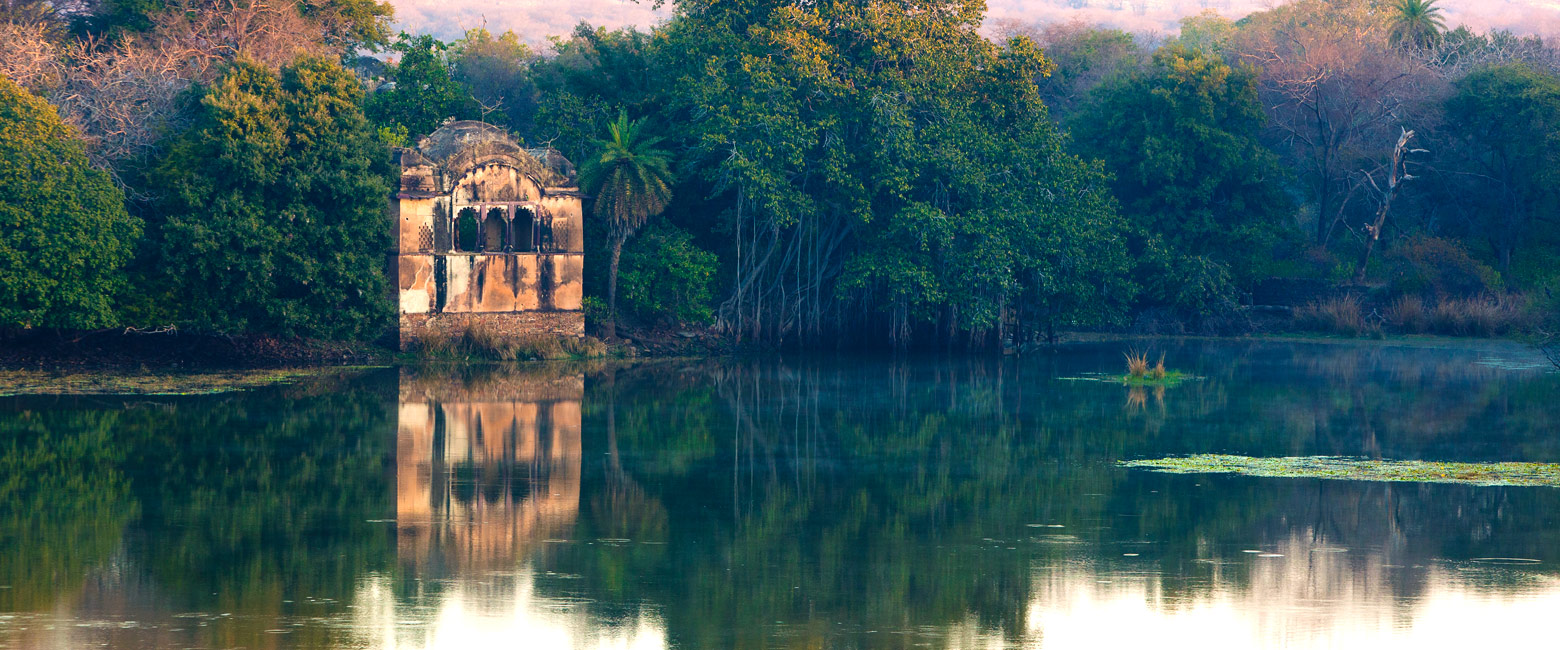
Extraordinary tailor-made adventures,
from earthy and edgy to easy and extravagant
From around USD 2500 per person, you set the ceiling
Sample Trips
Here are some of our popular trip shapes

Get started on your trip
It’s never too soon to get in touch, we are here to help with every stage of your planning.
Best Lodges
We regularly inspect and photograph all of the the best lodges, to ensure that we always recommend the most suitable options
Key Locations
Take a look around related locations. Click ‘View more’ to explore locations further afield.























